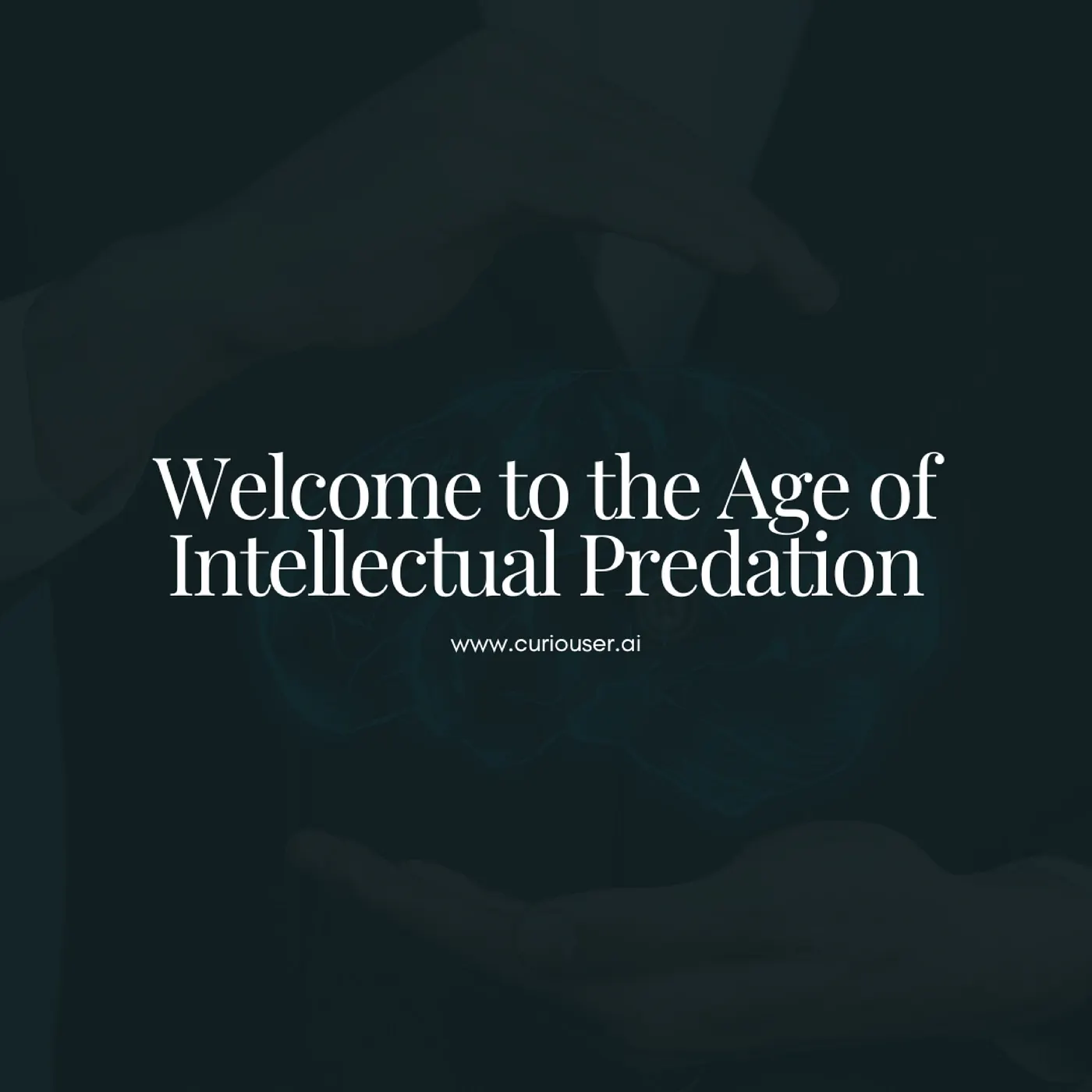

Are We Living in a Post-IP World Where You Keep What You Take?
As of early 2025, there are at least 39 active copyright lawsuits in the U.S. – all aimed at the largest names in AI: OpenAI, Microsoft, Meta, Google, Stability AI, Midjourney, Anthropic, DeviantArt, and others.¹
The charges?
That they trained massive AI models on copyrighted content – books, articles, songs, software, and journalism – without permission, compensation, or attribution.²
Now OpenAI is accusing DeepSeek of stealing its IP.
But OpenAI itself is being sued by The New York Times, George R.R. Martin, and dozens of other creators for doing the exact same thing.³
This isn't irony.
It's the collapse of Intellectual Property as we knew it.
IP Isn't Dead. It's Just Been Replaced by Power.
In the analog era, patents and copyrights protected innovation.
In the AI era, scale and narrative protect it.
- Apple didn't invent the smartphone.⁴
- Meta didn't invent Stories.⁵
- Google didn't invent generative AI.
- OpenAI didn't invent the transformer.⁶
But they moved fast. Deployed big. Branded hard.
And dared anyone to stop them.
The New Rule: Move Fast, Borrow Freely, Litigate Later
We're now living in the normalization of intellectual predation.
Borrow first.
Monetize fast.
Apologize never.
IP today isn't a moat.
It's a delay tactic.
Enforcement isn't legal – it's logistical.
If you can afford the lawyers, flood the zone with marketing, and out-ship the competition,
you don't need to invent it. You just need to win the distribution game.
The Era of Suing Each Other with Stolen Tools
We've entered the legal singularity:
- AI companies are suing each other over data no one truly owns.
- The models are trained on scraped content from millions of creators who were never paid.
- And now they're claiming proprietary rights over outputs they can't even trace.
In short:
The thief is suing the thief for stealing stolen goods.
So What Still Matters?
If IP is collapsing, then trust, values, and brand become your only durable moat.
When everything can be copied, the only thing that can't be replicated is who you are.
- Community: people who opt-in to your values
- Narrative: stories that scale faster than specs
- Integrity: the rarest asset in tech
- Time: because reputation compounds – and erodes – every day
But There Is Still Hope
Because this doesn't happen by accident.
It happens when we let it.
We allowed platforms to monetize our identities.
We allowed algorithms to shape our thoughts.
We allowed startups to scale by scraping our work – and called it innovation.
Maybe it's time to bring something back.
Call it trust.
Call it loyalty.
Call it integrity.
We know it when we see it.
We get the government we deserve.
And we get the technology we deserve.
At the end of the day, it's our data.
And it's our dollars that fund this entire ecosystem.
The Real Question
So the real question isn't: What did they steal?
It's: What are we willing to defend?
In the age of AI, intellectual property is no longer protected by law alone—it's protected by trust, integrity, and the courage to stand for something real. The companies that will endure aren't those who move fastest. They're the ones who build deepest.
Written by Stephen B. Klein & Alice
Sources & Additional Reading
- "Case Tracker: AI Copyright and Class Action Lawsuits"
BakerHostetler
View Source - "Master List of Lawsuits v. AI Companies"
ChatGPT Is Eating the World
View Source - "US authors' copyright lawsuits against OpenAI and Microsoft combined with newspaper actions"
The Guardian, April 2025
View Source - "Apple Copied These 15 Apps for iOS"
TechCrunch, multiple reports
View Source - "Instagram Stories: How Snapchat's Best Feature Was Cloned by Meta"
The Verge
View Source - "Attention is All You Need"
Vaswani et al., Google Brain, 2017
View Source


